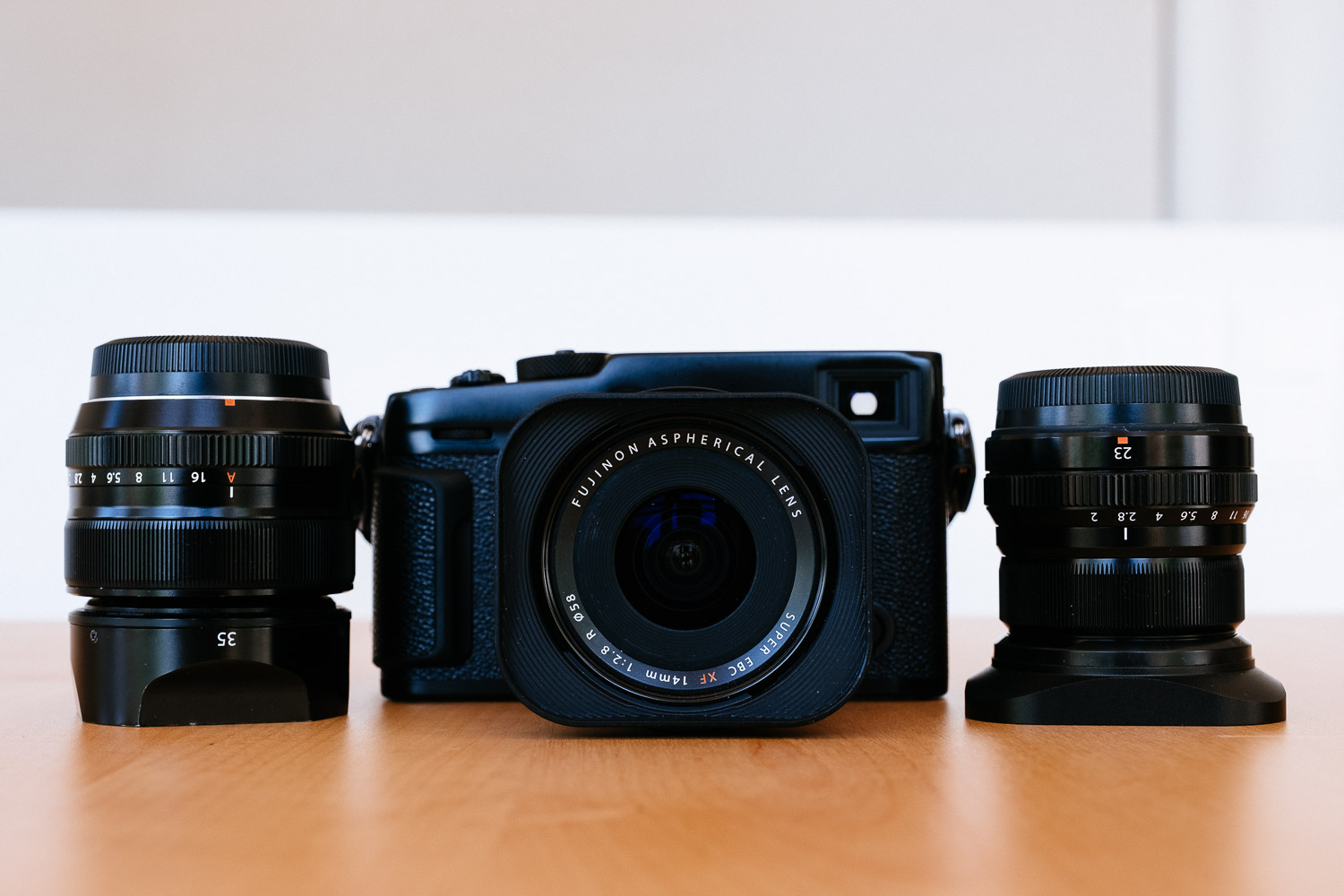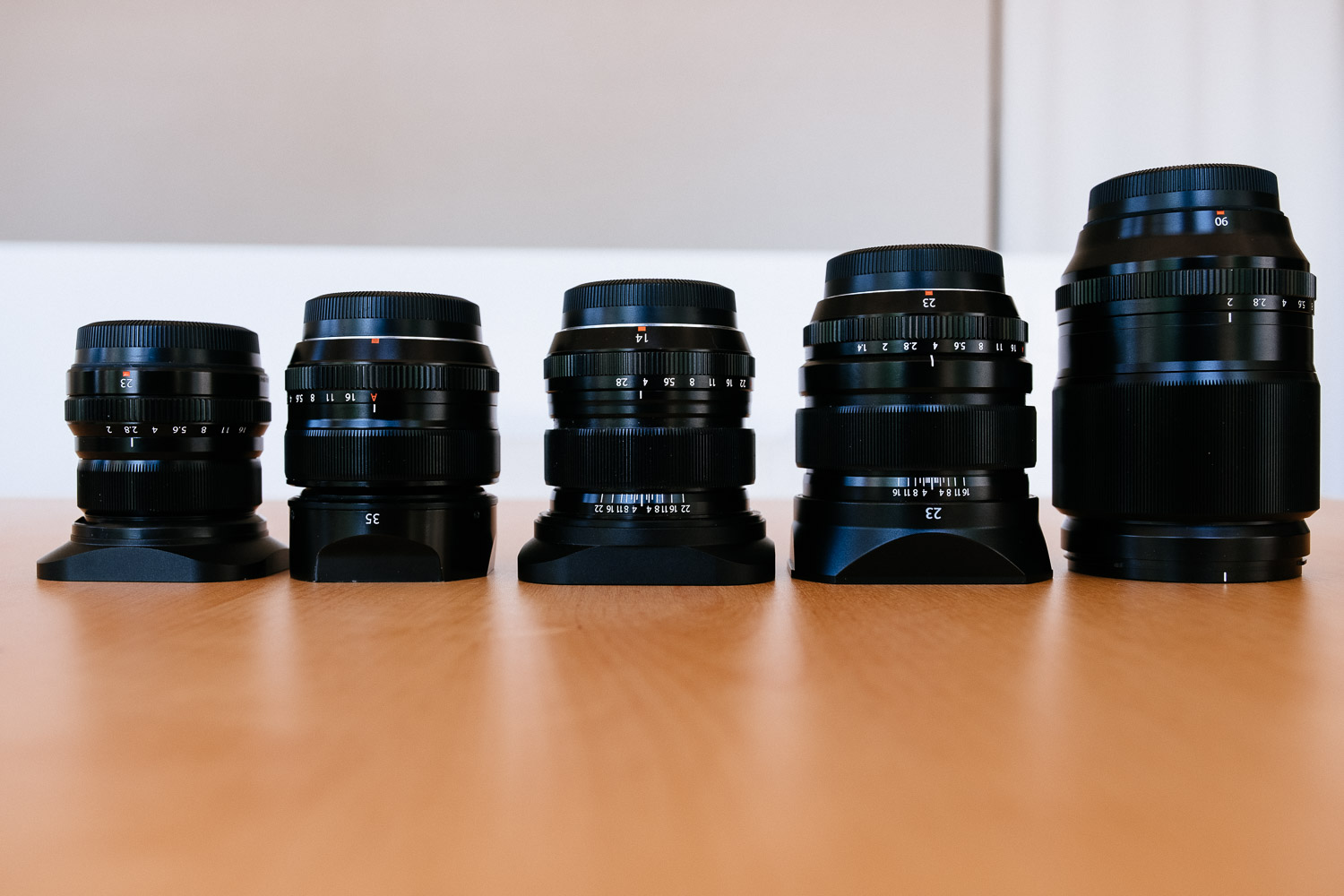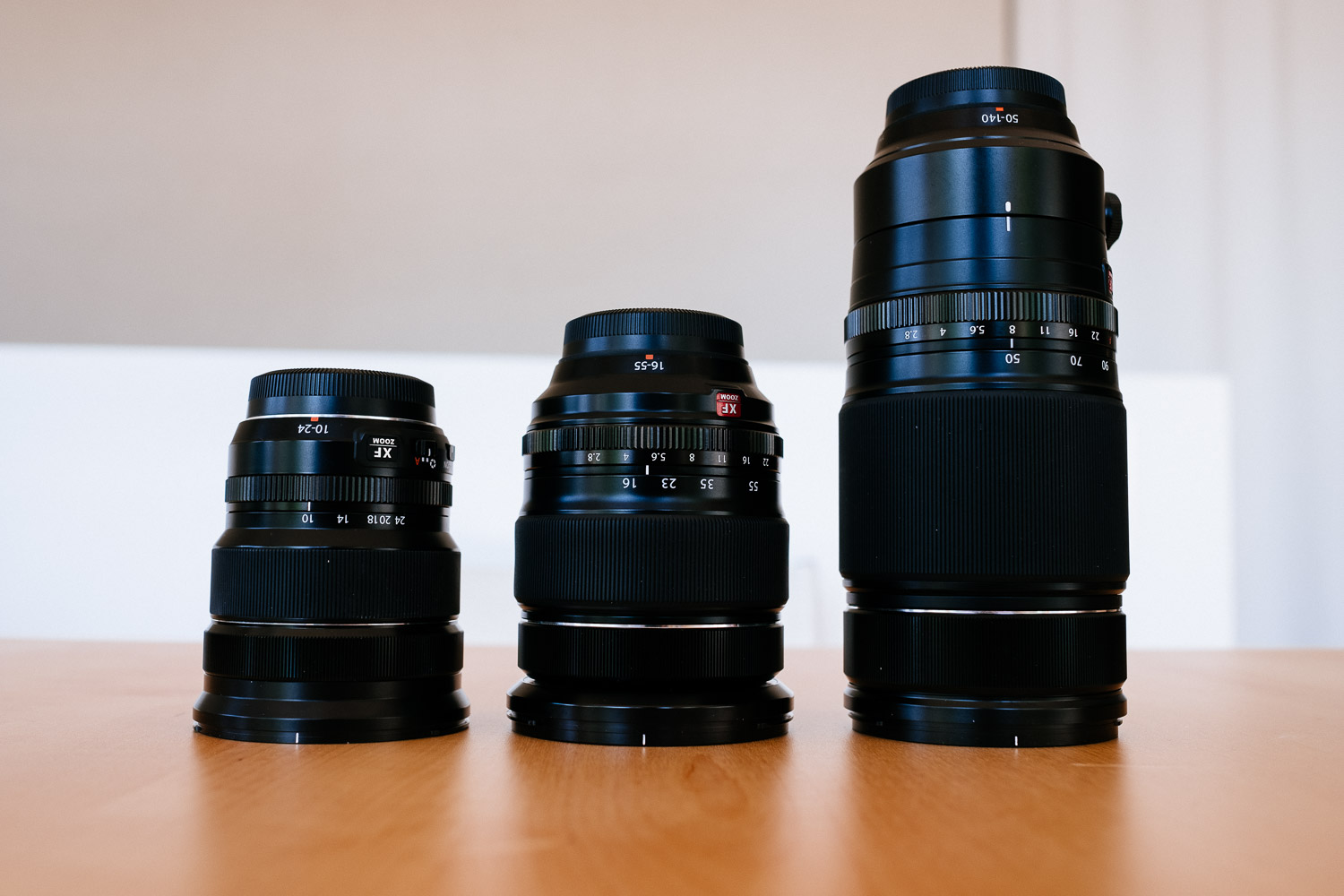 FUJIFILM X-H1 (33.2mm, f/5.6, 1/40 sec, ISO250)
FUJIFILM X-H1 (33.2mm, f/5.6, 1/40 sec, ISO250)
In December 2012 I got a second hand Fuji X-Pro1 as a small camera beside my Canon FF gear. Since I got the X-Pro2 in Spring 2016 I only shoot Fuji. Time to look at the main reason: the Fuji lenses.
Within those 10 years I have bought and sold many lenses. This blog post is about the lenses that I kept. I will go through them starting with the primes and from short to long focal length.
 FUJIFILM X-H1 (20.6mm, f/4, 1/80 sec, ISO200)
FUJIFILM X-H1 (20.6mm, f/4, 1/80 sec, ISO200)
Fuji XF14/2.8R: In short this is my all time favourite lens from Fuji. I got my copy in February 2013 just right before my very first business trip to South East Asia. Initially I was afraid that it might be too wide but it is just right. I think this lens is perfect because it is sharp even wide open and it has practically no distortion. It doesn’t have to rely on software to correct distortion so that’s why the corners are extremely sharp too. In addition it is small and light but still tough. It has a focus clutch for street photography and it just produces beautiful images.
What’s not to like: the aperture ring on my copy is far too loose. A fly that lands on it could change the aperture. The lens shade is ugly (the one from the 18-55) and when it finally broke I replaced it with a very nice square shaped one made of metal. AF is not silent but it is fast so it’s not a big deal for me.
Fuji XF23/1.4R: One of the earlier lenses from Fuji but one were Fuji finally got the aperture ring right. Mechanically this is a very nice lens and I replaced the ugly lens hood with the square hood from Fuji right from the start. This is a very important focal length for me so I got the lens when it came out. It is a great lens. Image quality is impressive and the rendering of the out of focus parts (Bokeh) is pleasing for such a short focal length.
But it’s not all perfect. First it is a little on the big and heavy side. This is still a small lens but I would prefer it smaller and lighter on my X-Pro3. In my opinion the biggest issue is its AF. It is rather slow and not very reliable in poor light. On my X-Pro1 I got more miss focused images with it than with any other lens from Fuji. It improved with the newer cameras but I still can’t fully rely on it. Wide open and up close it is a little soft but stopped down this lens is as sharp as it gets. A great lens but a little tricky in poor light.
Fuji XF23/2WR: The smaller sister of the 23/1.4. Super small and light and built quality is great too beside the lens hood that I replaced with a small rectangle lens hood made of metal when I lost the original one. The lens has WR so it should offer some protection from the elements if used on a WR camera. Image quality is very good but behind the 23/1.4. But AF is fast, silent and reliable. Because of that and because of the size and weight advantage it replaced the 23/1.4 in my small camera setup for Asia.
An almost perfect lens but there is a softness when shot wide open in closer distance (portrait distance or closer). It’s not that bad but of course I would prefer that it would not be the case. The cure is simple though: stop down to f2.8 or f4 and everything is fine.
Fuji XF35/1.4R: My oldest lens. I got it together with the X-Pro1 and the XF18/2R in December 2012. It still works including the original lens shade. This is one of the three lenses that Fuji launched together with the X-Pro1. That means it has a rather loose aperture ring and the AF is noisy. The AF was very slow on the X-Pro1 but it improved a lot with the newer camera bodies. On my X-Pro2 it was already good enough that it didn’t really bother me anymore. On the X-Pro3 it seems to be improved even further as now even eye – AF finally works. This is still not a lens for action though. It’s not the sharpest lens from Fuji either but the rendering is very nice. For my business trips to Asia this is my longest lens and it acts as a portrait or “tele” lens.
As already mentioned above. Built standard not as good as on newer lenses and AF is maybe the weakest point of this lens. So not perfect but still one of my favourite lenses from Fuji.
Fuji XF90/2WR: A very special lens that I got in exchange for my XF56/1.2R. When I tried to sell the 56/1.2 I mentioned that I would use the money to get the XF90/2WR. So a guy who had a 90/2 but wanted the 56/1.2 wrote me, we met half way in a restaurant on the Autobahn, had coffee and cake and swapped lenses. The 90/2 is an excellent lens. It’s perfect for close up headshots but also for full body shots. The kind of images that you can get with a 70-200/2.8 on a full frame camera but with a much smaller camera. It is sharp even wide open, Bokeh is very nice and AF is fast though not totally silent. Of course the main application is portrait photography but it doubles as a tele lens for landscape or even sport because of its fast AF.
What’s not to like? The lens is rather big and heavy by mirrorless standards and it rattles when you shake it. At least there is an easy fix regarding the rattling: Don’t shake the lens, it’s an optical instrument not a cocktail. OIS would have been nice. I prefer to shoot this lens on my X-H1 because I need image stabilisation for precise framing.
 FUJIFILM X-H1 (23mm, f/4, 1/60 sec, ISO200)
FUJIFILM X-H1 (23mm, f/4, 1/60 sec, ISO200)
Fuji XF10-24/4OIS: A super wide angle zoom is an extremely versatile lens. If you prefer zoom lenses it is the second one to get after the standard zoom. The lens has a constant aperture of f4, image stabilisation and the zoom range is very nice by covering everything from ultra wide to 24mm which means there are less lens changes required compared to if you shoot i.e. with the 8-16mm from Fuji. Image quality is very good especially on the wide side. It gets a little softer at 24mm but that focal length usually is covered by the standard zoom so it was a good decision by Fuji to focus on the performance in between 10 to 16mm. I think it should be stopped down a little to f5.6 or f8 for best results. The lens is small and light for what it is.
Even though it has a constant aperture the aperture ring is unmarked and rotates freely. A rather strange decision that has been corrected in the newer version of the lens. It’s not a WR lens (again corrected in the new version) and the lens hood is kind of ugly but that’s true for most of Fujis lens hoods. And it is not the most flare resistant lens that I can think of. In that regard it is clearly a step behind the next lens.
Fuji XF16-55/2.8WR: A rather controversial lens because of its size and weight but most of all because of the fact that it doesn’t have image stabilisation. That’s why I also initially hesitated to get the lens. So here is the good news first: The lens is bigger and heavier than the 18-55 but it is easy to see why. Image quality is excellent not only for a zoom lens, it also compares very well to the prime lenses in its range. Most important: It is truly excellent on its wide end even wide open. Color, contrast and the rendering of the out of focus areas makes it very easy to detect an image taken with this lens.
AF is very fast and silent and the built quality is excellent with a perfect resistance on both aperture and zoom ring. No creeping! It’s a WR lens and as I have experienced during my visit of the Niagara falls if attached to a Fuji X-H1 it can really handle some light rain or in this case excessive spray.
The only negative is really that its size and weight puts the whole camera – lens combo into full frame territory (full frame mirrorless plus 24-70/4). But it is better than the usual 24-70/4 and regarding pure image quality it should be compared to a 24-70/2.8 but compared to that its subject isolation is limited. An XF35/1.4 can do much more in that regard. Nevertheless the perfect lens regarding image quality, build quality and AF performance.
Fuji XF50-140/2.8OIS: I just wrote above that I hesitated to get the 16-55. I hesitated even more to get the 50-140. The reason: size and weight again but also range. I would have preferred a 70-200 but I understand that the size would haven been even bigger. I still have the 1.4 TC from the time when I owned the 100-400 so that will get me a little more reach. AF performance is very good and OIS works and helps a lot with precise framing. There is a tripod collar which makes shots in portrait orientation from a tripod so much simpler (in case you shoot with a tripod). Sharpness is excellent (prime like) and contrast and colours are great too. In short: an excellent lens.
But where is light there is shadow. Today there are full frame mirrorless cameras and if compared to such a camera with an 70-200/4 attached there is no real size and weight advantage anymore. But like the 16-55 I think the Fuji 50-140 is better than the 70-200/4 variants from Canon and Sony that I used to shoot. It is closer to the f2.8 version of the Canon but without its subject isolation capability. As mentioned above sharpness is top. Maybe the lens is even too sharp and contrasty which can lead to a rather average Bokeh. As a result contrasty backgrounds can look busy or even ugly. So watch out for sunlit branches or other light elements in the background.
Prime lens vs zoom lens: What is better a prime or a zoom? Here is a very clear answer: it depends! It clearly depends on what you prefer. Zooms are very convenient and today there are excellent ones like the three I reviewed here. I prefer zooms for landscapes and for travel photography when I visit a country where I mostly drive around in a car and have some occasional hikes. A vacation in the USA is clearly something where I shoot zooms most of the time. There I have no problem with the size and weight of the Fuji X-H1 with the 16-55 or the 50-140 attached. It feels natural and it helps to reduce lens changes which are not ideal in the desert.
On a business trip to Asia I would never bring those zoom lenses and the big Fuji X-H1. For those I have my X-Pro3 plus 14/2.8, 23/2 and 35/1.4. Nice and compact but extremely powerful. Since my camera gear has become very light compared to the old days I usually also take my small bag on those vacations in the USA.
On such a vacation I bring two camera bodies, my three zoom lenses and three small primes. Almost everything I own. I know that this may sound crazy for some but for me it would be crazy to leave 90% of my gear at home for those trips. I love photography so it would be stupid to leave my gear at home when I go somewhere really nice where can combine my two favourite hobbies: to travel and to take pictures.
Of course I don’t have everything with me all the time. Usually it is big camera and zooms during the day and on hikes, small camera and small primes in the evening and in cities. This is the true beauty of shooting Fuji: A camera system that is truly flexible.
 FUJIFILM X-H1 (23mm, f/8, 1/9 sec, ISO200)
FUJIFILM X-H1 (23mm, f/8, 1/9 sec, ISO200)
That’s it. A detailed description of the Fuji lenses that I currently use. And here is the list of Fuji lenses that I owed but meanwhile sold:
- XF16/1.4WR sold because I prefer the wider view of the 14/2.8
- XF18/2R sold because I hardly used it (because of the 14/2.8)
- XF27/2.8 sold because I replaced it with the 23/2 and 35/1.4
- XF50/2WR sold because I prefer the 35/1.4
- XF56/1.2R replaced by the 90/2
- XC16-50OIS sold together with the X-M1
- XF18-55OIS replaced by the 16-55/2.8
- XC50-230OIS replaced by the 55-200 but in retrospect I should have kept it
- XF55-200OIS replaced by the 50-140
- XF100-400OIS replaced by the 50-140 + 1.4TC
